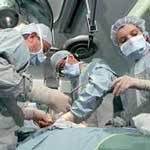The FDA Proposes A Plan To Identify High-Risk Medical Devices
 To improve their ability to follow-up on medical devices after they’ve been released on the market and to create prompter recalls when necessary, the FDA proposed a plan to create a new system that would assign a unique identification number to each high-risk medical device. In 2007, Congress voted to support the agency’s plan, and just passed a new law that set a deadline for final enactment of the system for late this year.
To improve their ability to follow-up on medical devices after they’ve been released on the market and to create prompter recalls when necessary, the FDA proposed a plan to create a new system that would assign a unique identification number to each high-risk medical device. In 2007, Congress voted to support the agency’s plan, and just passed a new law that set a deadline for final enactment of the system for late this year.
When implemented, the system will assign a unique device identifier (UDI) to each device. This will be similar to a barcode. An example of these high-risk devices is the Zimmer Durom Cup that have been known for Zimmer hip complications. The information associated with the product will then be contained in a publicly available UDI database.
The implementation and hoped for improvements of the plan
According to the FDA, the plan would be implemented in stages with UDIs applied first to the high-risk devices. Low-risk and over-the-counter devices like bedpans, for instance, would not require the code. The estimated cost to the industry will be $65 million or more, but for those at risk of health problems medical devices, the cost may prove to be well worth it.
In their press release, the FDA stated the benefits to the new system including:
• Reduced medical errors
• Easier identification of counterfeit devices
• More accurate reporting and analyzing of adverse event reports
• More effective management of device recalls
• Improved preparation for medical emergencies
How the plan can help and how it came about
Doctors, with the new database, could identify if a medical device may be inappropriate for certain patients. Plaintiffs involved in a lawsuit typically claim that the company failed to adequately warn of complications. With the database in place, doctors could more quickly find out if a device were the subject of a number of adverse event reports.
This new plan came about following the past several years in which thousands of patients have allegedly suffered from complications related to medical devices such as the Zimmer Durom Cup. Some have filed a lawsuit seeking compensation for their hip problems like premature loosening and metal poisoning—both of which often require surgery for revision of the Zimmer hip.
Critics, including plaintiffs in Zimmer hip lawsuits, have blamed the FDA for being slow to act concerning post-marketing reports of problems. In a July 3, 2012 press release, the agency responded by announcing their proposal for a new system that would improve the tracking of “metal-on-metal” devices like the Zimmer Durom Cup.
[SmartLink zimmerhiplawsuit]

